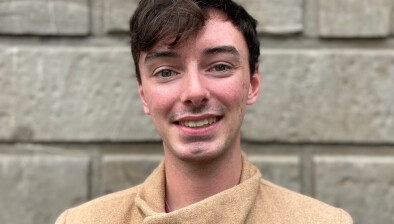Blog: Is there a role for Body Worn Cameras in security monitoring?

Robert Browne, partner at McKeever Rowan Solicitors in Dublin, reflects on whether the law allows anyone to secretly keep watch and record our movements.
Celebrity chef, Gordon Ramsay may have felt justified in spying on his fifteen year old daughter and her boyfriend in her bedroom. Ramsay used his son’s ‘Go-Pro’, “one of those secret little cameras”, as he put it, to keep an eye on the pair as they studied together for tests. But is anyone allowed to secretly keep watch and record our movements?
The answer to that is that it depends on where you are and what you are doing. In November 2015, Google Street View captured images of a woman in a compromising position (urinating in public!) on a side-street of a city in the Netherlands but unfortunately, failed to pixelate or blur the face, leaving her recognisable from certain angles. Recognisable images recorded by the Google car or indeed, any CCTV cameras, except those used in a private residence, are “personal data”. These recordings are subject to Data Protection laws, meaning that certain rules must be observed.
Surveillance in public areas is a necessity for a number of reasons, such as, to prevent or combat crime and to safeguard the public. The day after the ISIS terror attacks in Paris in November 2015, Army Ranger Wing troops patrolled the rooftops of Dublin’s Dundrum Town Centre. The troops were engaged in exercises in anticipation of the moderate threat of an ISIS attack on the busy south-side shopping centre. It is to be expected that the comings and goings of shoppers and others will be subjected to high level security monitoring.
It seems that surveillance and recordings are here to stay. In February 2014, a District Court Judge was critical of a business that had not provided Gardaí with CCTV footage in support of its claim that an expensive mobile phone had been stolen from one of its premises. The CCTV footage was said to be “integral” to the prosecution of the case.
Camera phones, body worn cameras (such as ‘the Go-Pro’) as well as drones (unmanned aerial vehicles) are now widely available. There is already a proliferation of fixed CCTV on our streets, in public buildings and in places of business. Many businesses may consider making use of new mobile devices for monitoring purposes. However, it is no easy task to achieve the proper balance between benefitting from technology’s marvellous advances, while taking care not to invade a person’s ‘private space’, even in public places. Businesses needs to accommodate and plan for the presence of these new monitoring devices.
There is a very thin line between freedom of expression and the right to carry on a business, and the competing rights of individuals to privacy and data protection.
Use of Mobile Camera Devices: Points to note:
Where a business wishes to employ mobile camera devices, perhaps alongside more traditional CCTV systems, there are a number of points to bear in mind:
Risk and Privacy Impact Assessments
In this regard, it is vital that businesses carry out a thorough review of their Data Protection policy to include a Risk Assessment and a Privacy Impact Assessment on the specific need for, and the protocols around, the operation of body worn cameras or mobile cameras before they are put into use.
Security Companies
Where a business engages an independent security company (a data processor) to perform its security surveillance, it has a duty to ensure that its contract with the security company contains clear terms of reference to ensure that its methods of surveillance are appropriate and lawful.
Drones
The operation of drones over 1 kg, requires registration with the Irish Aviation Authority according to recent new laws. A drone cannot fly over an assembly of people or over urban areas. An operator of a drone over 4 kg must undergo safety training.









